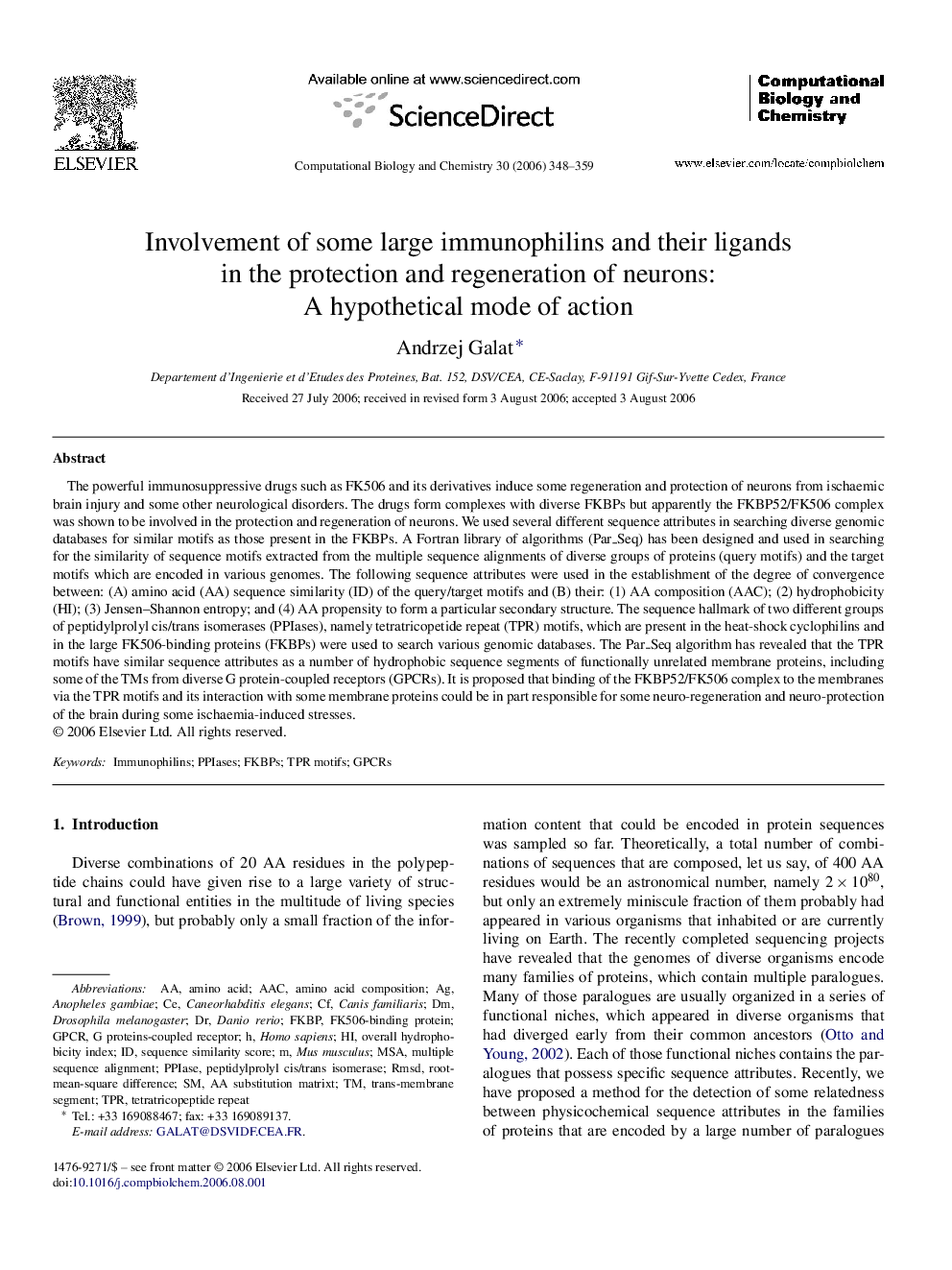| Article ID | Journal | Published Year | Pages | File Type |
|---|---|---|---|---|
| 15517 | Computational Biology and Chemistry | 2006 | 12 Pages |
The powerful immunosuppressive drugs such as FK506 and its derivatives induce some regeneration and protection of neurons from ischaemic brain injury and some other neurological disorders. The drugs form complexes with diverse FKBPs but apparently the FKBP52/FK506 complex was shown to be involved in the protection and regeneration of neurons. We used several different sequence attributes in searching diverse genomic databases for similar motifs as those present in the FKBPs. A Fortran library of algorithms (Par_Seq) has been designed and used in searching for the similarity of sequence motifs extracted from the multiple sequence alignments of diverse groups of proteins (query motifs) and the target motifs which are encoded in various genomes. The following sequence attributes were used in the establishment of the degree of convergence between: (A) amino acid (AA) sequence similarity (ID) of the query/target motifs and (B) their: (1) AA composition (AAC); (2) hydrophobicity (HI); (3) Jensen–Shannon entropy; and (4) AA propensity to form a particular secondary structure. The sequence hallmark of two different groups of peptidylprolyl cis/trans isomerases (PPIases), namely tetratricopetide repeat (TPR) motifs, which are present in the heat-shock cyclophilins and in the large FK506-binding proteins (FKBPs) were used to search various genomic databases. The Par_Seq algorithm has revealed that the TPR motifs have similar sequence attributes as a number of hydrophobic sequence segments of functionally unrelated membrane proteins, including some of the TMs from diverse G protein-coupled receptors (GPCRs). It is proposed that binding of the FKBP52/FK506 complex to the membranes via the TPR motifs and its interaction with some membrane proteins could be in part responsible for some neuro-regeneration and neuro-protection of the brain during some ischaemia-induced stresses.
